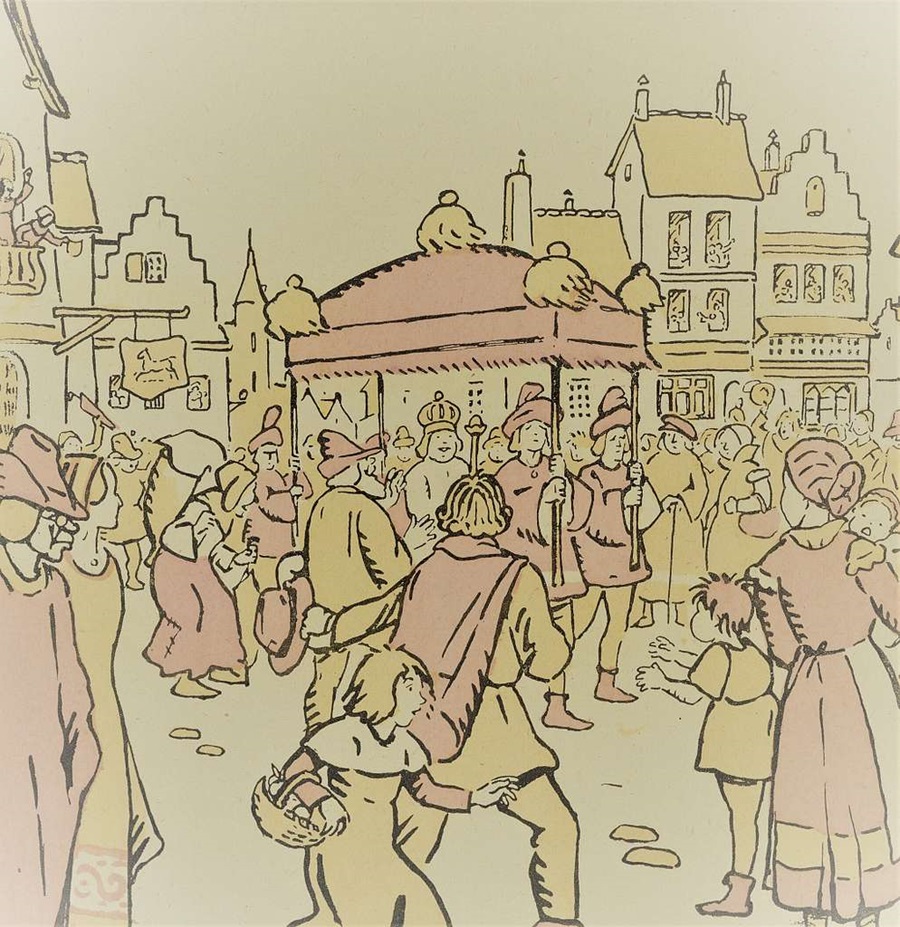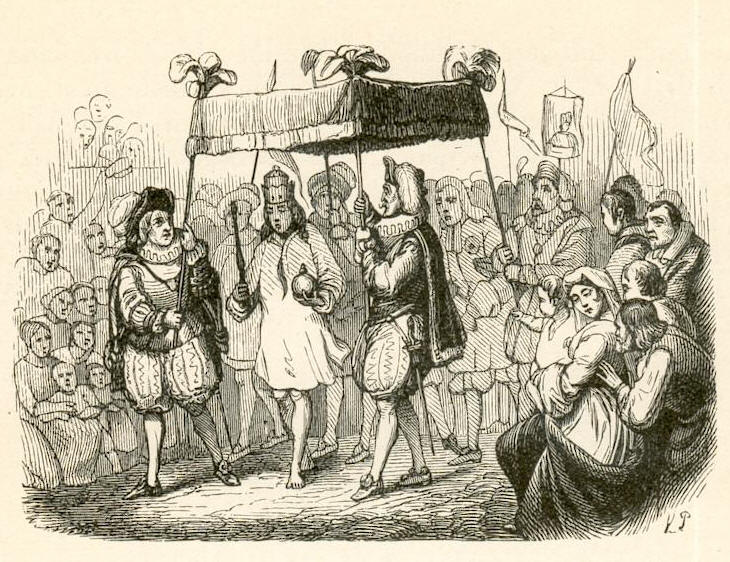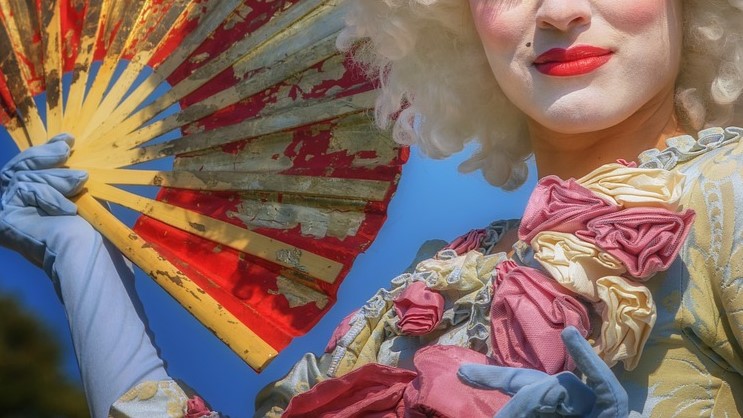There are many fairy tales that I react to differently as an adult than I did when I was a kid. One of the starkest examples is Hans Christian Andersen’s The Emperor’s New Clothes. I remember first hearing this story, and like all kids, I thought it was hilarious. A bunch of adults pretending to see a set of invisible clothes? Clearly these people are stupid! But reading this story as an adult . . . it hits differently. Because honestly? Adults get it. We get how a whole room of people could be so terrified to look stupid or lose their jobs that they say nothing. Even when we’re all silently thinking the same thing.
Clearly this fairy tale has some substance to it and a very universal message. And like the Emperor’s clothes, that message is quite transparent in its importance.

In Case You Forgot, Here’s a Refresher of this Fairy Tale . . .
In Andersen’s original “The Emperor’s New Clothes,” a rich and powerful emperor cares more about fashion than anything else. This ruler spends ridiculous sums to commission new outfits for himself whenever the whim strikes. Although the original text doesn’t mention it, all these fabulous clothes are probably funded by taxes.
With an emperor so willing to part with so much money, it comes as no surprise that two swindlers arrive in the kingdom. The duo claims to be skilled weavers who know how to spin the most exquisite fabric known to man. The unique quality of this cloth: it appears completely invisible to anyone who is either unfit for their position or stupid. Although this fairy tale has no magic in it whatsoever (which is rare for a fairy tale), magic apparently exists in the world of “The Emperor’s New Clothes.” No one questions the veracity of this invisibility cloth. And the emperor jumps at the chance to wear such a fabric, partially so he can own the most magnificent cloth on earth. But he also wants to know which members of his court he should fire.
For the Record, this Aspect of the Plot Has Always Confused Me
Being unfit for your position is one thing, but cloth that turns invisible when a person is stupid? Maybe I’m just a cynical person, but that seems like a very low bar to me. There are A LOT of stupid people in the world. This emperor who prances in front of mirrors all day is clearly not lacking in self-confidence, but still. You would think that appearing naked in front of even a handful of people would not sound appealing to this guy.

But regardless, the emperor desperately wants this not-invisible cloth, so the imposters get to work. Several members of the emperor’s court go to see the cloth before His Majesty, and every one of them pretends to be super impressed while silently freaking out that they see nothing on the looms. This pattern goes on, everyone pretending to see the cloth for fear of being ridiculed. Even the emperor pretends to be dazzled when he visits the empty loom. Of course the two swindlers are pocketing all the fabric and jewels and riches sent to them for the king’s fabulous new outfit. And when they proclaim the ensemble finished, they make a huge show of dressing the emperor in his new clothes that are so finely woven that they feel like you’re wearing nothing at all.
Now the emperor is ready to show off his fly threads to the entire kingdom. Even though he feels completely naked, he leads the procession through the entire kingdom. Everyone compliments him profusely, pretending to see what’s not there.
Until One Person Brings the Whole Illusion Crashing Down
Hans Christian Andersen originally ended this fairy tale with no one questioning the emperor’s new clothes at all. But later, Andersen updated the story to include one naysayer: a little child, who boldly shouts, “He doesn’t have anything on!” when the emperor struts past. From the mouths of babes, as they say.
This one comment from a child finally breaks the townspeople out of their complacency until they’re all admitting that the clothes aren’t there. Hearing the truth of this makes the emperor shudder, but he continues proudly through the whole city, naked and refusing to admit he got conned. The final detail of the story is the chamberlains following behind the emperor, still pretending to carry the train that isn’t there.

Of Course the Message is Obvious
Adoring clothes as much as he does, the emperor is clearly a symbol of pride, vanity, and excess. All of these qualities make him easy to fool and too proud to admit it. But beyond Andersen’s warnings against pride and vanity is the more complex message of this story: how desperate people are to protect their reputations. At the end of the day, people are willing to lie about anything to protect themselves from judgment, which goes to show just how fragile a reputation can be.
When the fear of being ostracized is hanging in the balance, the motivation to conform and join the groupthink can be overpowering. Especially when people on both sides of you are joining in the lie. It’s easy to see how fear of rejection can lead full-grown adults to say something they know isn’t true in order to spare themselves from rocking the boat. Even the chamberlains at the end of the story are so dedicated to keeping their jobs that they continue the charade—even when an entire crowd is shouting the truth.
We can clearly see what Hans Christian Andersen had to say about the excesses of royalty and the character of the inner circles of nobility. And there’s certainly universal appeal to “The Emperor’s New Clothes.” We’ve all felt that peer pressure to remain silent and not stand out from the crowd.
Hans Christian Andersen Wasn’t the First to Tell This Story
Andersen’s source material for “The Emperor’s New Clothes” was a Spanish fairy tale called “The Invisible Cloth” written centuries earlier. In this story, people who can’t see the clothes are said to be illegitimately born and unfit to inherit their father’s property. I’m not surprised that the very Christian Hans Christian Andersen chose a tamer angle than this one. But having your legitimacy called into question was definitely higher stakes than being unfit for your position. It meant that you no longer had any claim to your property and would die a beggar, a terrible outcome for anyone.

No one dares to question the invisible cloth until the king parades through the city with no clothes at all. Then a lowly black servant, who has nothing to lose, points out the obvious: the clothes aren’t real and the guy is naked. The king beats him for saying so, but the damage has been done. Others in the crowd finally admit that none of them see any clothes. Once the king realizes he’s been swindled, the imposters have fled and taken all the gold, silver, and silk with them.
Other Versions Worldwide
There are many renditions of “The Emperor’s New Clothes,” all with charming cultural details from their countries of origin. In Turkey, the king wears an invisible turban. The tale from Sri Lanka features an invisible copper robe and a king forced to ride naked atop an elephant. In Germany, the king commissions a spectacular painting rather than clothes (also invisible to anyone born illegitimately). The Russian king orders the most finely spun thread in the world. And in India, the king enters a spectacular palace to see God himself.
No matter what fine experience or product is promised, the swindlers in all of these stories deliver invisible wears that reveal an illegitimate child or some other moral flaw. In most tales, everyone stays silent for fear of being found out, and the imposters prevail and make off with all the riches they can carry. But every now and then, an unexpected observer lets the cat out of the bag.
The Lowly and Innocent
Not all versions of “The Emperor’s New Clothes” have a child telling the truth in the end. But the character who reveals the truth of the invisible object is always the lowest person on the totem pole. Children don’t share the same social fears and anxieties as adults do, mainly because children are innocent. In other cases, lowly servants or beggars speak the truth because they have no social standing to protect. It’s this simple honesty that turns the humblest member of the cast into the smartest person in the entire crowd.
There’s evidence that Andersen’s last-minute addition of the child in “The Emperor’s New Clothes” was autobiographical. Andersen wrote details about himself into many of his fairy tales. Apparently the child pointing out the flaws of royalty was Andersen himself. Young Hans went to see King Frederic VI of Denmark and expected His Majesty to look more impressive than he did. Andersen apparently shouted to his mother that the king was no more than a man.

This incident reflected Andersen’s thoughts about royalty even into adulthood. He openly disliked the Danish bourgeoisie, thinking them all to be snobs and charlatans. It’s no wonder that the true hero of “The Emperor’s New Clothes” is a little one who shatters the farce. Once one voice speaks the truth, the whole crowd finally dares to say it out loud: the clothes don’t exist.
The Ease of Deception—AND the Ease of Truth
I actually think this fairy tale has a hopeful message. Yes, it shows just how easily we are all deceived, too ashamed to contradict the groupthink of our society. But this story also shows the flipside. Just one sentence that rings true can shake people out of deception. We may all be under the spell of our fragile reputations. But that spell is just as fragile when it faces the truth.
Technically the entire cast of this story are liars, which is relatable in a way. Is there anyone who hasn’t told a white lie to spare the feelings of someone they don’t even know well? And yet, as easy as it is to lie, it’s even easier to just tell the truth. You know what they say: those who tell the truth don’t have to remember anything. Is being truthful really more vulnerable than walking down the street in your birthday suit? How much worse is it going through life pretending to agree with ridiculous things you know aren’t real?
Because at the End of the Day, the Truth Isn’t Subjective
This might be an unpopular opinion, but in a world where political correctness and moral relativism have taken over, a story like “The Emperor’s New Clothes” is more relevant than it’s ever been before.
Just because an idea offends someone, that doesn’t make it false or too dangerous to speak out loud. Even if an entire kingdom agrees that the emperor’s clothes look fabulous, that still doesn’t make them real. So if powerful people are telling you something that doesn’t make sense, remember “The Emperor’s New Clothes.” Even if you think you’re the only person who can’t see the trousers, rest assured that you’re not alone. ❧





